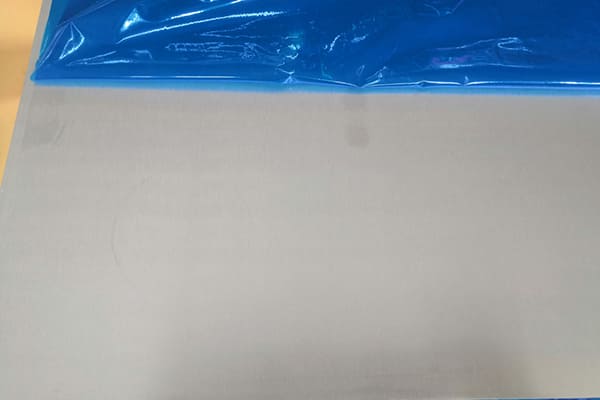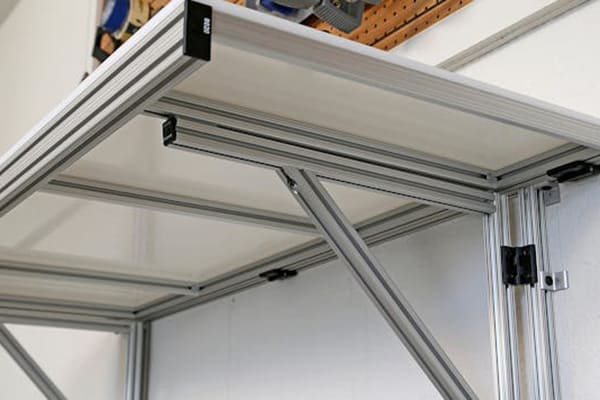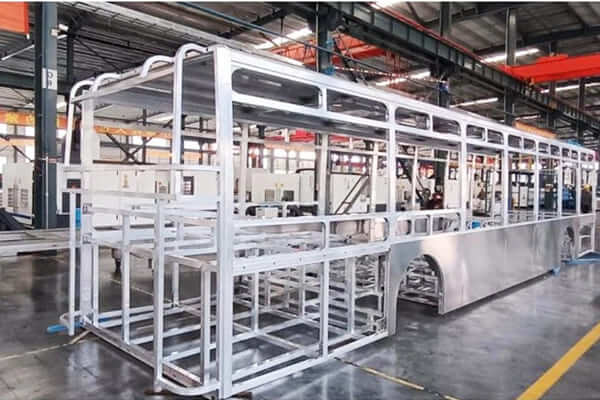Introduction: Navigating the World of Aluminum Alloys
Aluminum alloys are indispensable materials in modern engineering and manufacturing, prized for their unique combination of lightweight properties, strength, and corrosion resistance.
Within the vast family of aluminum alloys, the 6xxx series, primarily alloyed with magnesium and silicon, stands out for its excellent extrudability and heat-treatable characteristics.
Among these, Aluminum 6065 vs 6005 are two prominent alloys frequently considered for structural and architectural applications.
While both share the common advantages of the 6xxx series, subtle yet significant differences in their chemical composition and resulting mechanical properties dictate their optimal use cases.
Understanding these distinctions is crucial for engineers and manufacturers to make informed material selections, ensuring product performance, cost-effectiveness, and manufacturing efficiency.
This comprehensive guide delves into a detailed comparison of Aluminum 6065 vs 6005.
We will explore their chemical compositions, mechanical and physical properties, typical applications, and key advantages and disadvantages.

Chemical Composition of Aluminum 6065 vs 6005
The precise blend of elements in Aluminum 6065 defines its characteristics. The primary alloying elements are magnesium (Mg) and silicon (Si), which form magnesium silicide (Mg2Si), responsible for the alloy’s heat-treatable nature and strength.
The chemical composition of Aluminum 6005 is carefully balanced to optimize its extrusion characteristics and mechanical properties. It contains slightly different proportions of magnesium and silicon compared to 6065, which influences its specific performance attributes.
| Element | 6005 | 6065 |
|---|---|---|
| Aluminum (Al) | 96.8 – 98.3 | 97.5 – 99.0 |
| Magnesium (Mg) | 0.8 – 1.2 | 0.4 – 0.6 |
| Silicon (Si) | 0.4 – 0.8 | 0.6 – 0.9 |
| Copper (Cu) | 0.15 – 0.4 | Max. 0.35 |
| Chromium (Cr) | 0.04 – 0.35 | Max. 0.1 |
| Iron (Fe) | Max. 0.7 | 0.4 – 0.9 |
| Manganese (Mn) | Max. 0.15 | Max. 0.1 |
| Zinc (Zn) | Max. 0.25 | Max. 0.1 |
| Titanium (Ti) | Max. 0.15 | Max. 0.1 |
| Others (each) | Max. 0.05 | Max. 0.05 |
| Others (total) | Max. 0.15 | Max. 0.15 |
Key Physical and Mechanical Properties of Aluminum 6065 vs 6005
Key Physical and Mechanical Properties of Aluminum 6065
Aluminum 6065 exhibits a range of properties that make it a preferred choice for many engineering applications.
Its balance of strength and formability allows for intricate designs and reliable performance.
| Property | Value/Description |
|---|---|
| Density | 2.70 g/cm³ |
| Melting Point | ~580–650°C |
| Tensile Strength (T6 Temper) | ~290–340 MPa (estimated) |
| Yield Strength (T6 Temper) | ~250–300 MPa (estimated) |
| Corrosion Resistance | Good, suitable for general and marine use |
| Thermal Conductivity | ~160–180 W/m·K (estimated) |
| Electrical Conductivity | ~40–45% IACS (estimated) |
| Weldability | Excellent, supports various welding methods |
| Formability | Very good for extrusion and shaping |
| Thermal Expansion Rate | 23.6 × 10⁻⁶ /°C (estimated) |
Aluminum 6065, especially in the T6 temper, provides a robust material with good strength and excellent corrosion resistance.
Its formability and weldability are significant advantages, simplifying manufacturing processes and allowing for complex fabrications.
This alloy maintains its integrity in various conditions, making it a reliable choice for long-term applications.
Key Physical and Mechanical Properties of Aluminum 6005
Aluminum 6005 exhibits robust physical and mechanical properties, making it a reliable choice for various structural and architectural applications.
Its strength and workability are key factors in its widespread use.
| Property | 6005-T5 Value (MPa) | 6005-T6 Value (MPa) |
|---|---|---|
| Tensile Strength | ≥ 190 | ≥ 260 |
| Yield Strength | ≥ 110 | ≥ 240 |
| Elongation at Break | ~10–12% | ~8–10% |
| Density | 2.70 g/cm³ | 2.70 g/cm³ |
| Corrosion Resistance | Good | Good |
| Weldability | Good | Good |
| Formability | Excellent | Excellent |
Aluminum 6005, particularly in its T5 and T6 tempers, offers a good balance of strength and ductility.
Its excellent formability and weldability make it highly adaptable for various manufacturing processes, especially extrusion.
This alloy provides reliable performance in environments requiring moderate to high strength and good corrosion resistance.
3. Common Tempers and Applications of Aluminum 6065
Aluminum 6065
Aluminum 6065 is typically used in T5 and T6 tempers, which are achieved through specific heat treatments to enhance its mechanical properties.
The T6 temper, involving solution heat treatment and artificial aging, provides the highest strength.
This makes it ideal for structural components where high strength and durability are paramount.
Common applications for Aluminum 6065 include:
- Architectural Extrusions: Window frames, door frames, and curtain walls benefit from its strength, corrosion resistance, and aesthetic appeal.
- Structural Components: Its high strength-to-weight ratio makes it suitable for various structural applications in buildings and infrastructure.
- Automotive Industry: Used for body panels, chassis components, and frames where lightweight and strong materials are essential for fuel efficiency and safety.
- Marine Applications: Boat hulls, gangways, and other marine structures benefit from its excellent corrosion resistance in saltwater environments.
- General Engineering: Components requiring good machinability and weldability, such as custom fabricated parts and machinery frames.

Aluminum 6005
Aluminum 6005 is most commonly available in T5 and T6 tempers, which are achieved through heat treatment processes to optimize its mechanical properties for specific applications.
The T6 temper provides higher strength, while the T5 temper offers a good balance of strength and ductility.
Typical applications for Aluminum 6005 include:
- Structural Components: Its good strength and excellent extrudability make it ideal for structural members in construction, such as railings, scaffolding, and support systems.
- Transportation: Used in the automotive and railway industries for components like bus body structures, railcar parts, and truck frames, where its strength-to-weight ratio is beneficial.
- Architectural Applications: Window and door frames, as well as other architectural extrusions, benefit from its good surface finish and corrosion resistance.
- Electrical Applications: Components like busbars and electrical enclosures where good electrical conductivity and structural integrity are required.
- General Industrial: Ladders, platforms, and other industrial equipment where a combination of strength, formability, and corrosion resistance is needed.

Aluminum 6065 vs 6005: A Head-to-Head Comparison
While both Aluminum 6065 and 6005 are versatile alloys within the 6000 series, their subtle differences in chemical composition lead to distinct performance characteristics.
Understanding these nuances is critical for selecting the optimal alloy for a given application.
Chemical Composition Differences
The primary distinction in chemical composition lies in their magnesium and silicon content:
- Aluminum 6065: Typically contains a higher percentage of magnesium (0.8-1.2%) and a slightly lower percentage of silicon (0.4-0.8%). This composition generally contributes to slightly higher strength and better corrosion resistance in certain environments.
- Aluminum 6005: Features a slightly lower magnesium content (0.4-0.6%) and a slightly higher silicon content (0.6-0.9%). This balance is specifically optimized for enhanced extrudability, allowing for more complex and intricate extruded profiles with excellent surface finish.
Mechanical Property Comparison
When comparing their mechanical properties, particularly in the T6 temper, both alloys offer robust performance, but with subtle variations:
| Property | Aluminum 6065 (T6) | Aluminum 6005 (T6) |
|---|---|---|
| Tensile Strength | ~290–340 MPa | ≥ 260 MPa |
| Yield Strength | ~250–300 MPa | ≥ 240 MPa |
| Elongation at Break | Good (e.g., ~11%) | Good (e.g., ~8-10%) |
| Hardness | Generally slightly higher | Good |
- Strength: Aluminum 6065 generally exhibits slightly higher tensile and yield strengths compared to Aluminum 6005 in similar tempers. This makes 6065 a marginally stronger choice for applications where maximum load-bearing capacity is a primary concern.
- Formability/Extrudability: While both are highly formable and extrudable, Aluminum 6005 is specifically engineered for superior extrudability. Its composition allows for faster extrusion speeds and the creation of more complex cross-sections with excellent surface quality, making it a preferred choice for intricate profiles.
Corrosion Resistance
Both alloys offer good corrosion resistance, typical of the 6xxx series.
Aluminum 6065, with its slightly higher magnesium content, may offer marginally better corrosion resistance in certain aggressive environments, particularly marine applications.
However, both are considered excellent choices for general atmospheric and mild corrosive conditions.
Weldability
Both Aluminum 6065 vs 6005 exhibit good weldability using common techniques like TIG and MIG welding.
The choice between them based on weldability is often negligible, as both perform reliably in welded structures.
Cost Considerations
Generally, the cost difference between Aluminum 6065 and 6005 is not substantial and can vary based on market conditions, supplier, and specific temper/form.
However, the manufacturing efficiency gained from 6005’s superior extrudability can sometimes lead to lower overall production costs for complex profiles.
Choosing the Right Alloy: 6065 or 6005?
The decision between Aluminum 6065 and 6005 ultimately hinges on the specific requirements of your application.
Both are excellent choices within the 6xxx series, but their subtle differences make one potentially more suitable than the other for certain scenarios.
- Choose Aluminum 6065 if:
- Your application demands slightly higher strength and hardness.
- You require excellent machinability for intricate part fabrication.
- The project involves marine environments where marginally superior corrosion resistance is beneficial.
- You need a versatile alloy suitable for a broad range of structural and general engineering applications.
- Choose Aluminum 6005 if:
- Your primary concern is superior extrudability, allowing for faster production speeds and more complex, precise profiles.
- The application involves architectural extrusions, window frames, or other components where a high-quality surface finish is crucial.
- You need a good balance of strength and formability for structural components in transportation or construction.
- Cost-effectiveness through manufacturing efficiency (due to better extrudability) is a key consideration for high-volume production of complex shapes.
In many cases, both alloys can perform adequately, and the choice might come down to supplier availability, specific temper requirements, or minor cost differences.
However, for optimized performance and manufacturing, understanding their nuanced strengths is invaluable.
Conclusion: Aluminum 6065 vs 6005
Aluminum 6065 vs 6005 are both highly capable and widely utilized alloys within the 6xxx series, each bringing a distinct set of advantages to the table.
Aluminum 6065 stands out for its slightly higher strength and excellent machinability, making it a robust choice for demanding structural and general engineering applications.
Conversely, Aluminum 6005 shines as an extrusion specialist, offering superior extrudability that facilitates the creation of complex profiles with efficiency and a high-quality finish.
FAQs About Aluminum 6065 vs 6005
Q1: Are Aluminum 6065 and 6005 interchangeable?
A1: While both are 6xxx series alloys and share many similarities, they are not always directly interchangeable. Aluminum 6065 generally offers slightly higher strength and better machinability, while Aluminum 6005 is specifically optimized for superior extrudability.
Q2: Which alloy is better for welding, 6065 or 6005?
A2: Both Aluminum 6065 vs 6005 exhibit good weldability using common techniques like TIG and MIG welding.
Q3: Can Aluminum 6065 and 6005 be heat-treated?
A3: Yes, both Aluminum 6065 vs 6005 are heat-treatable alloys. They can be strengthened through solution heat treatment and artificial aging to achieve various tempers (e.g., T5, T6), which enhance their mechanical properties like tensile and yield strength.
Q4: Which alloy is more corrosion-resistant in marine environments?
A4: Both alloys offer good corrosion resistance, typical of the 6xxx series. Aluminum 6065, with its slightly higher magnesium content, may offer marginally better corrosion resistance in certain aggressive marine environments.
Q5: Why is Aluminum 6005 often preferred for architectural extrusions?
A5: Aluminum 6005 is often preferred for architectural extrusions due to its superior extrudability. Its chemical composition allows for faster extrusion speeds and the creation of more complex and intricate profiles with excellent surface finish, which are highly desirable for architectural components like window frames and curtain walls.
